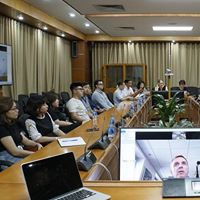written by Đào Khánh Huyền
In a world where every limit is being broken, tradition is being challenged, creativity is an invaluable asset that we need to cherish, nurture and preserve. Creativity will be the only thing that will differentiate human and machine in the upcoming decade. However, our daily repetitive schedule tends to kill our creativity with its own steady and boring rhythm. During a lesson with Mr. Patrice in the Master Program of Innovation, I was surprised to realize that my daily life was following an old path, which made me lose interest in trying new things. For example, I go to work, to school and back home on the same route every day. I am bored with this but ironically, I am too lazy to change. This afraid-to-change mindset is actually a warning signal to creativity.

In this article, I would like to introduce 5 easy ways to nurture and maintain creativity in our daily life.
- Talk to a kid
Kids are very imaginative and curious. They can think of something you have never thought of. Next time, when you encounter a problem, try asking a kid. Listening to their responses, you might be surprised by their different way of thinking. Even in case this does not work out with your problem, you can still have a good laugh.
- Make something on your own
The best way to nurture creativity is through art. You should take up some form of art such as painting, filming, photography, which will wake up your artistic instinct, thus boost your creativity. Remember that Steve Jobs learned calligraphy at his young age, which seems to have nothing related to the innovation of Macbook.
- Go somewhere you’ve never been
You can go and explore new places apart from your holiday. For example, you can try the nearby museums, parks, or simply just change your daily route to school/office. When exposed to a new environment or circumstances, your brain will be stimulated to feel, to observe and to be creative.
- Do something that scares you
When you can overcome any of your fear, this achievement will make you feel more confident in yourself. This allows you to be more creative in your thinking and actions.
Starting random conversations with strangers is also a way to learn because everyone has their unique perspectives – different ways to see things.
- Read more and step away from electronics.
Books are worlds beyond barriers of reality, allowing us to roam on creative space. There, we can connect existing knowledge with our dreams. Instead of hugging phones and computers, we should spend time reading and reflecting on ourselves.




